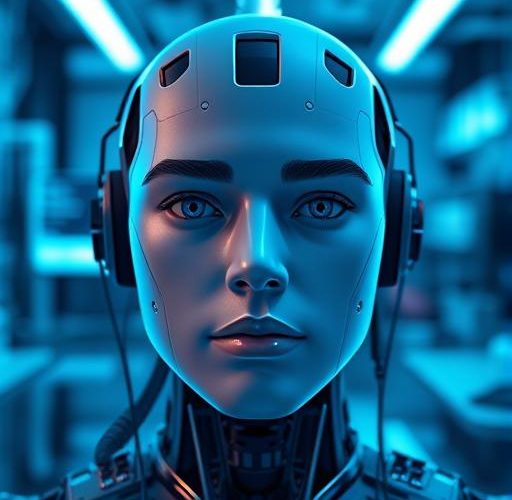Table of Contents Show
Imagine a world where machines think, learn, and work alongside humans—this is the reality that robotics is shaping today. From assembly lines to operating rooms, robots are revolutionizing industries and transforming how we live. But what exactly is robotics, and how is it changing our future? This beginner’s guide explores the fascinating world of robotics, its applications, and the exciting possibilities ahead.
What Is Robotics?
Definition of Robotics
Robotics is a multidisciplinary field that combines engineering, computer science, and artificial intelligence (AI) to design, build, and operate robots. These machines can perform tasks autonomously or with human guidance, leveraging sensors, actuators, and intelligent software to interact with their environment. Robotics is not just about hardware—it’s about creating systems that can think, adapt, and execute complex actions.
History of Robotics
The concept of robotics dates back centuries, with early automata appearing in ancient Greece and China. However, modern robotics began in the 20th century. The first industrial robot, Unimate, was introduced in 1961 to automate car production. Since then, advancements in AI, machine learning, and miniaturization have led to robots capable of tasks ranging from precision surgery to autonomous driving.
How Do Robots Work?
Components of a Robot
Robots consist of several key components: sensors (to gather data), actuators (to perform actions), control systems (to process information), and power sources (to provide energy). For example, a robotic arm in a factory uses sensors to detect objects, actuators to move precisely, and a computer to calculate the best path for assembly.
Types of Robots
Robots can be categorized based on their functions:
-
- Industrial Robots: Used in manufacturing for tasks like welding and assembly (e.g., KUKA robots).
- Service Robots: Assist in tasks like cleaning (Roomba) or entertainment (human-like robots like Sophia).
- Medical Robots: Help in surgeries (da Vinci Surgical System) or rehabilitation (exoskeletons).
- Autonomous Vehicles: Self-driving cars like Tesla’s Autopilot use robotics for navigation.
Applications of Robotics in Everyday Life
Robotics in Industry
Robots have revolutionized manufacturing by increasing speed, accuracy, and safety. Automated assembly lines reduce human error, while robotic arms handle hazardous tasks, such as welding or painting. In logistics, robots like Amazon’s Kiva systems streamline warehouse operations.

Robotics in Healthcare
From robotic surgery to prosthetics, robotics enhances medical care. The da Vinci Surgical System allows surgeons to perform minimally invasive procedures with precision. Rehabilitative robots help patients regain mobility, while AI-powered diagnostics improve early disease detection.
Robotics in the Home
Smart home devices like robotic vacuum cleaners (iRobot Roomba) and voice-activated assistants (Amazon Alexa) make daily life easier. Future home robots may manage chores, monitor security, or even cook meals, blending seamlessly into our routines.
The Future of Robotics and Automation
Emerging Trends in Robotics
The future of robotics is shaped by AI, machine learning, and swarm robotics—where multiple robots collaborate. Cobots (collaborative robots) work alongside humans in factories, while IoT and 5G enable real-time data sharing for smarter automation.
Ethical and Social Implications
Automation raises concerns about job displacement, but it also creates new roles in robotics development and maintenance. Ethical debates focus on robot rights, AI accountability, and ensuring robots act responsibly in sensitive environments.
The Role of Robotics in Shaping the Future
Robotics will address global challenges, such as climate change (through environmental monitoring drones) and aging populations (with eldercare robots). As technology advances, robots may become indispensable partners in solving complex problems.
Conclusion
Robotics is more than just machines—it’s a transformative force reshaping industries, healthcare, and daily life. From industrial automation to home assistants, robots are making tasks faster, safer, and more efficient. As AI and robotics evolve, their potential to innovate and improve society grows exponentially. Staying informed about these advancements ensures you’re part of the exciting journey into the future of automation.

FAQ Section
1. What is the difference between robotics and artificial intelligence?
Robotics focuses on physical machines designed to perform tasks, while AI refers to software and algorithms that enable machines to learn and make decisions. Robots often use AI to function intelligently, but not all AI applications involve physical robots.
2. Are robots going to replace human jobs?
Robots will automate repetitive tasks, but they’ll also create new jobs in robotics engineering, maintenance, and AI development. The key is adapting to a workforce where humans and machines collaborate.
3. What are the most common uses of robots today?
The most widespread applications include industrial manufacturing, healthcare (surgery, diagnostics), and consumer products like smart home devices and robot vacuums.
4. How can I start learning about robotics?
Begin with online courses (e.g., Coursera, edX), experiment with robotics kits (like LEGO Mindstorms), and join communities like IEEE Robotics or local maker spaces.
5. What are the challenges in developing advanced robots?
Challenges include improving AI capabilities for complex decision-making, ensuring safety in human-robot interactions, and addressing ethical concerns about autonomy and responsibility.





